Graphic
Jordan Tane Ko te mauri he mea tahuna i te moana
-
Tauira / Student
Jordan Tane -
Kaitautoko / Contributors
Cassie Khoo, Huri Campbell, Tanya Allport, Alayne Mikahere-Hall, Leland Ruwhiu, Nicole Coupe, Tania Ka’ai, Rolinda Karapu, Moana Eruera, Te Wai Barbarich-Unasa -
Kaiako / Lecturers
Denise Wilson, Stephen Reay
-
School
AUT Art + Design 2025
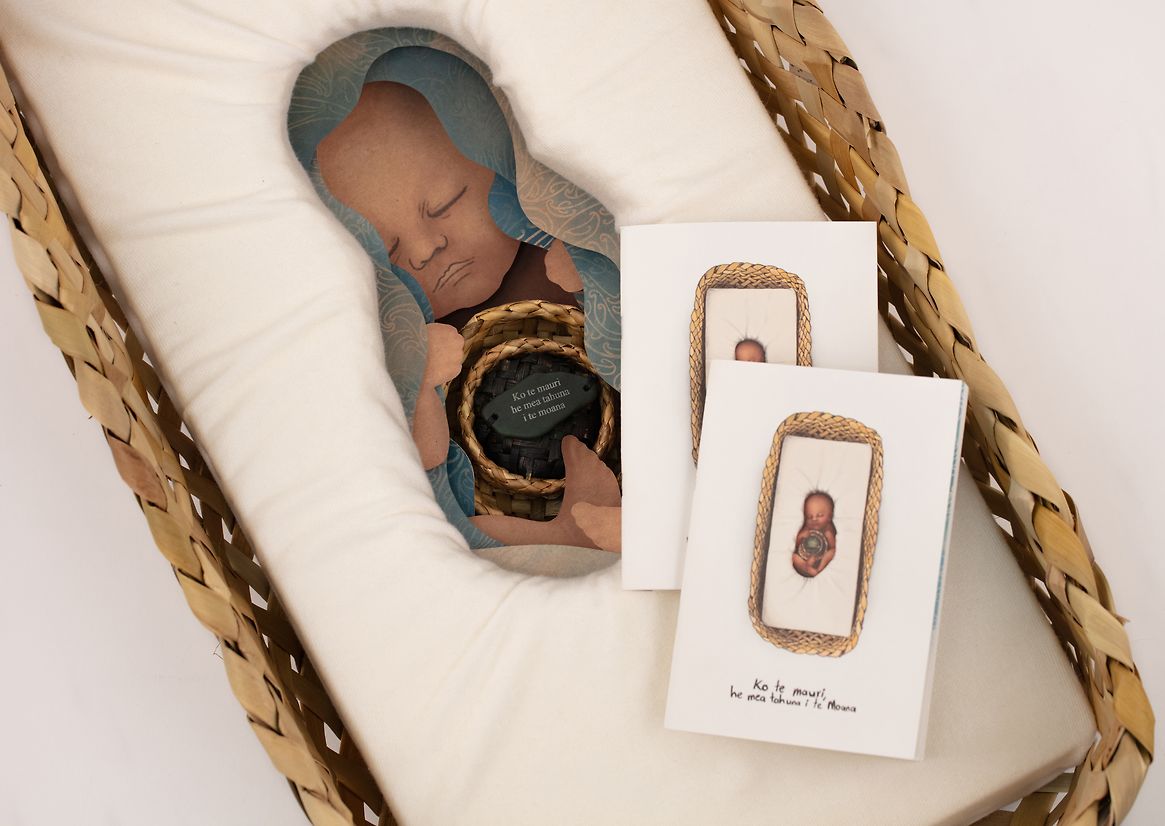
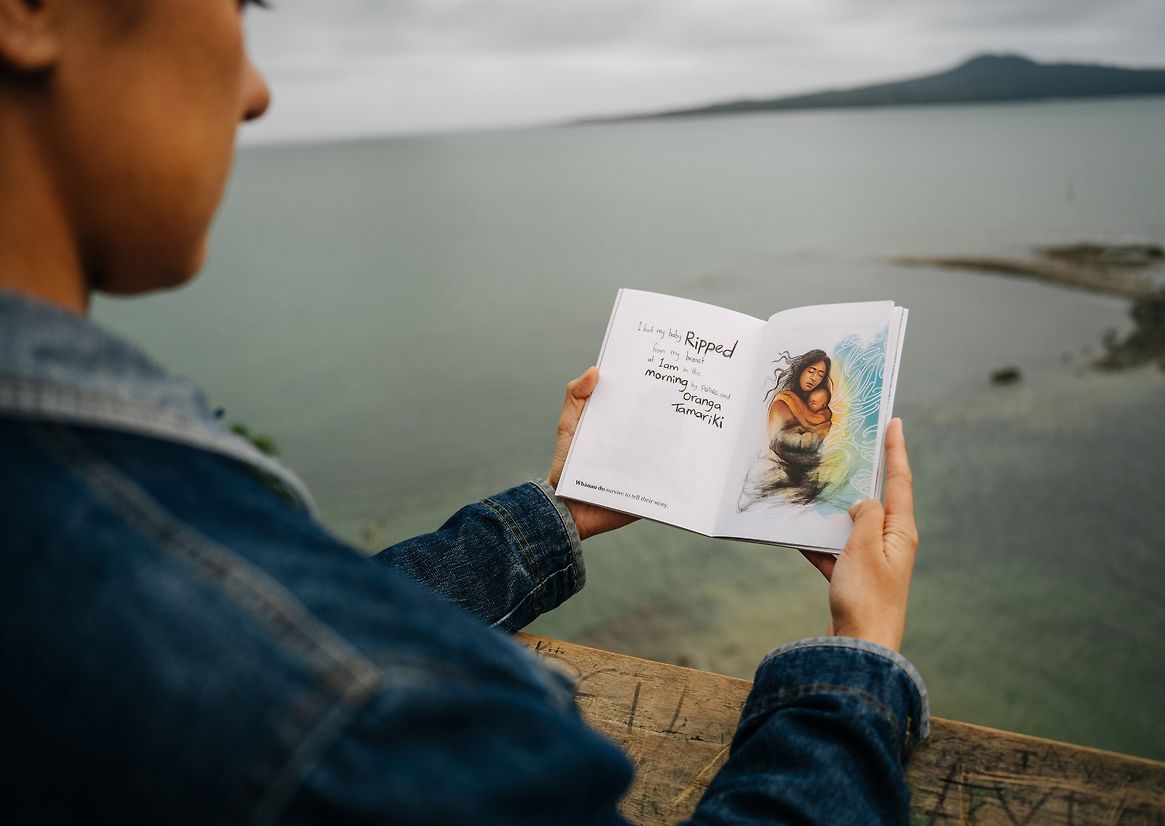
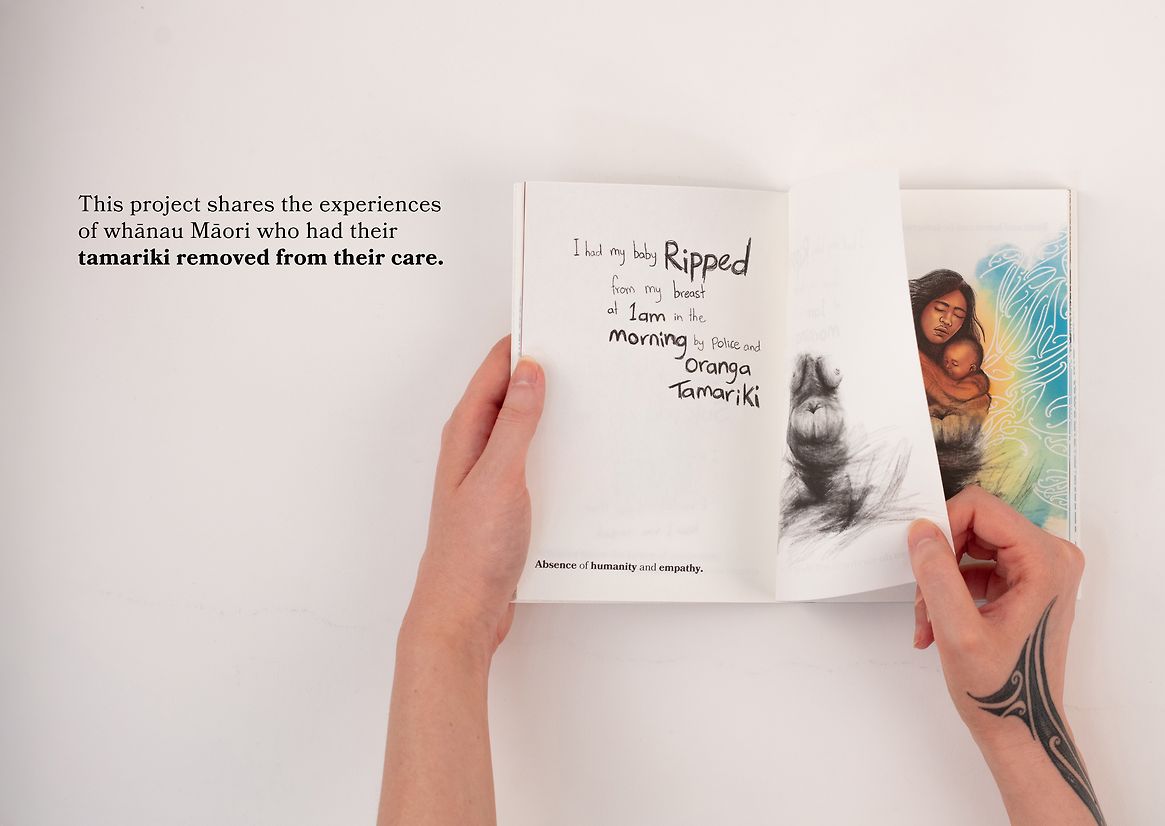
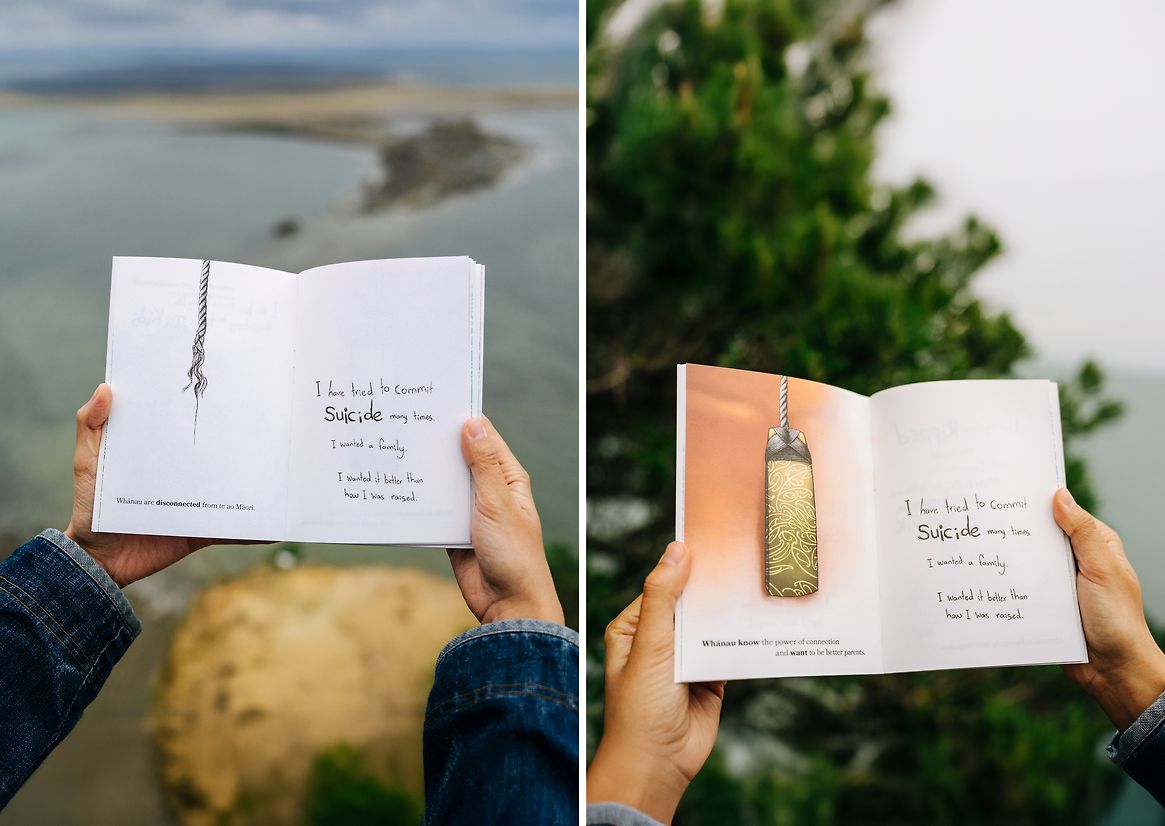
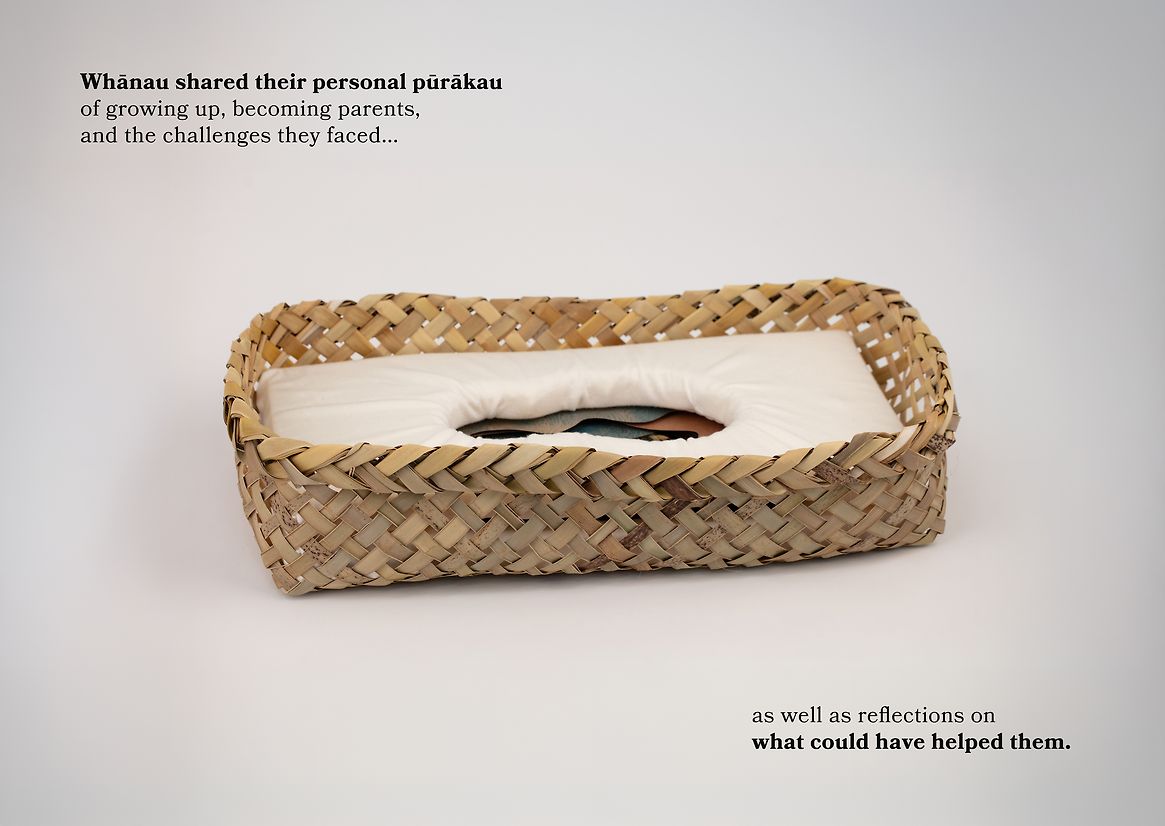
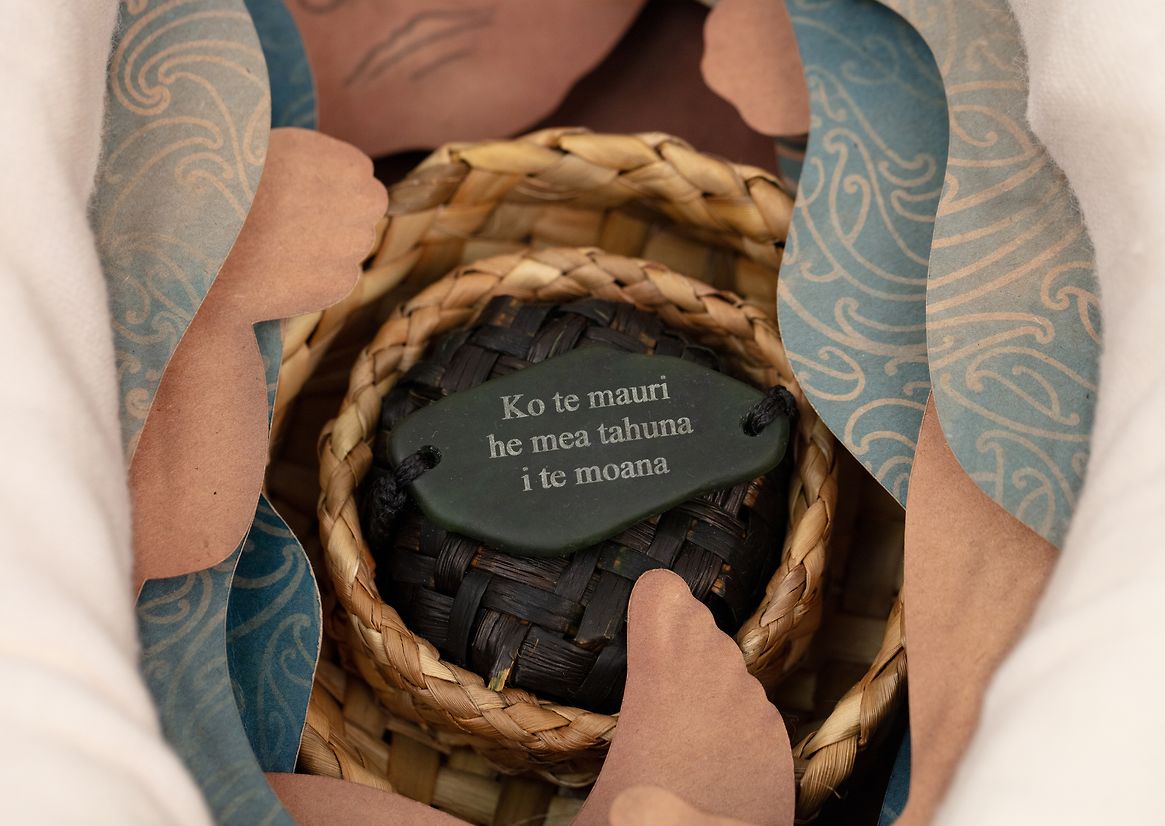
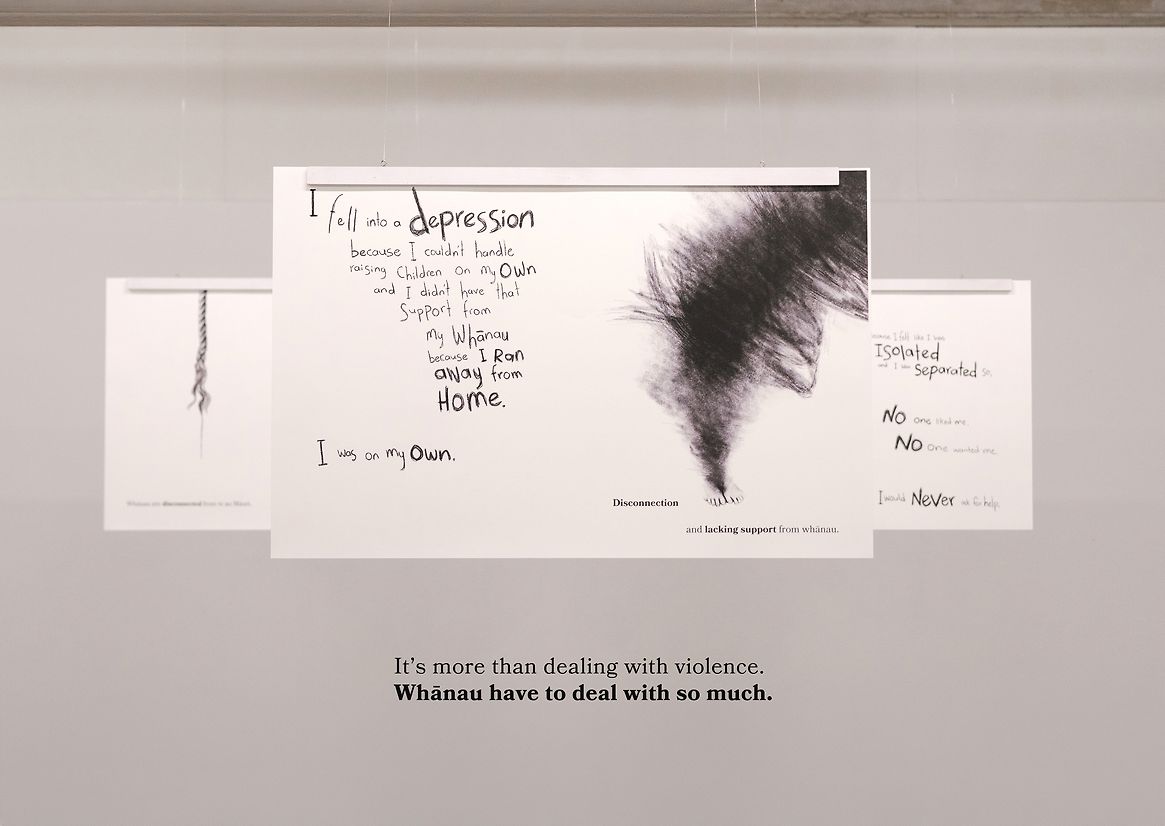
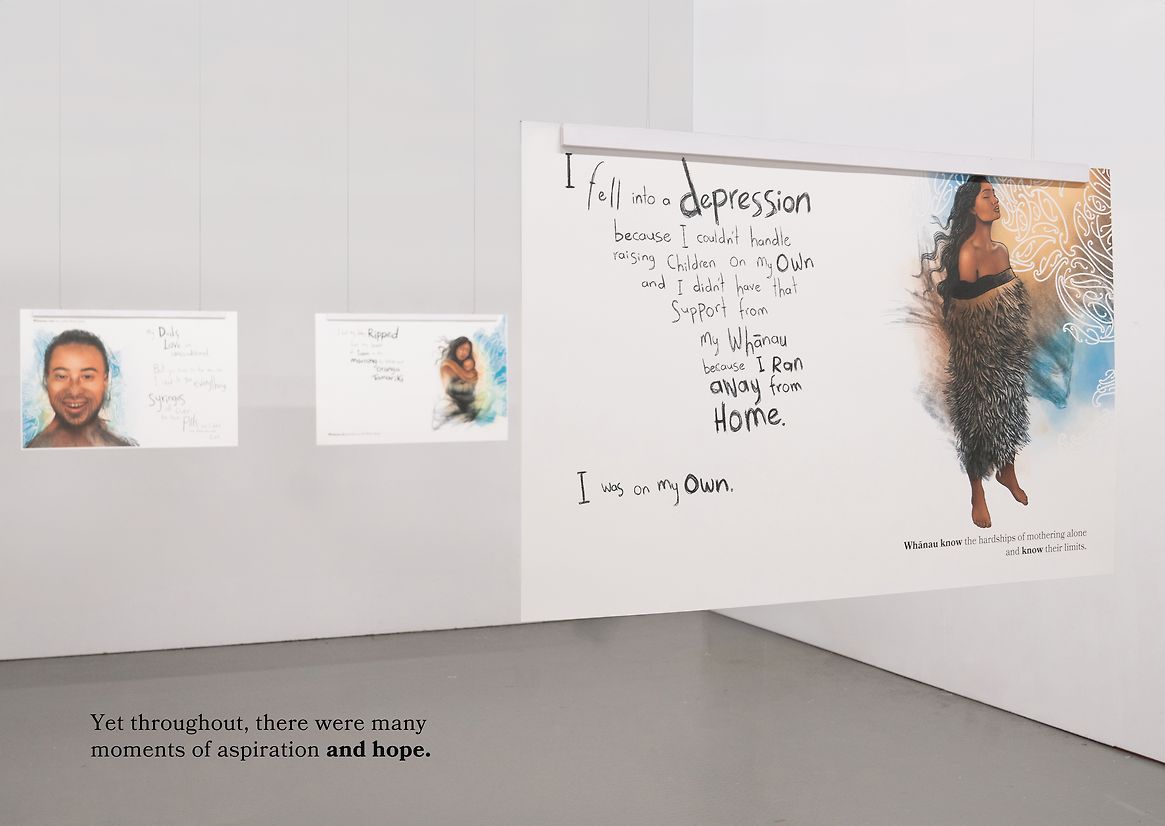
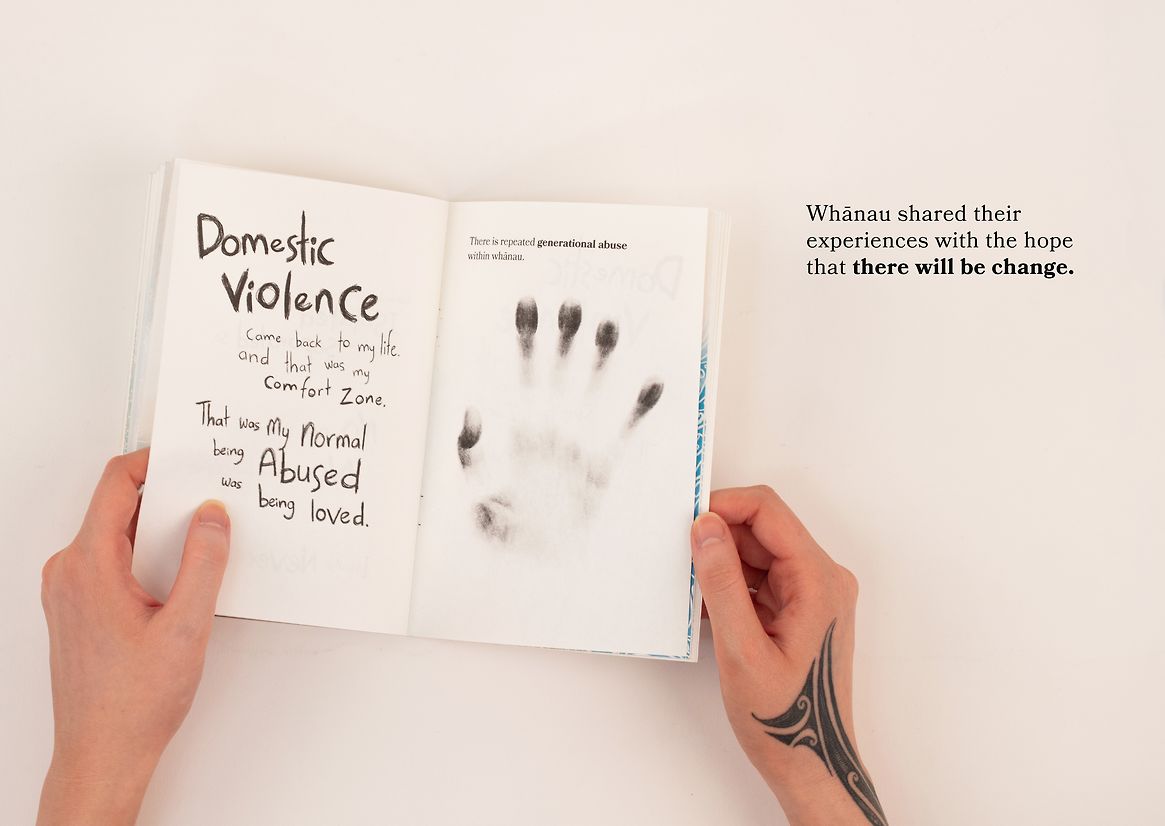
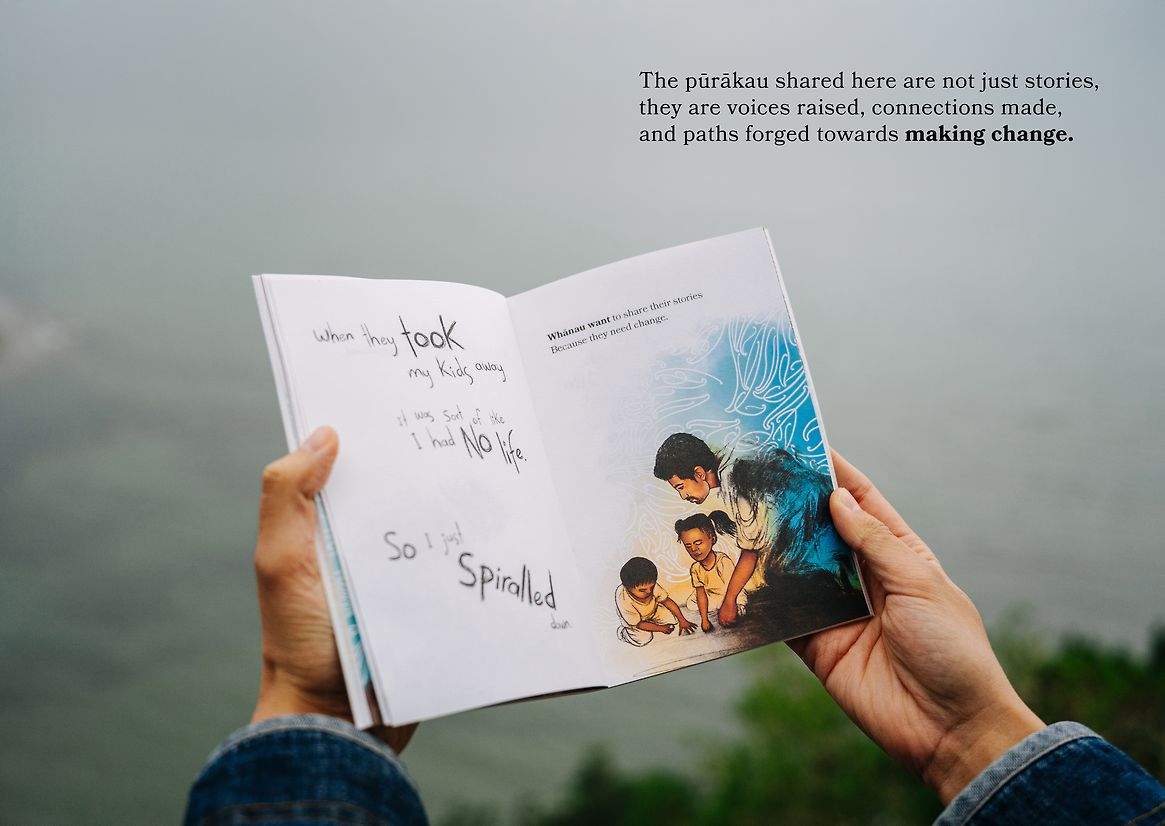
Description:
Ko te mauri he mea tahuna i te moana — Unlocking and unravelling our potential to heal
Māori are disproportionately represented in whānau violence statistics. Violence within whānau wreaks havoc on their potential functioning, oranga, and determines health and social outcomes for themselves and future generations. Whānau violence and the loss of mokopuna from whānau care further adds to ‘whānau in trauma’. Whānau have had their mana trampled, their tapū violated, are disconnected from whakapapa, their mauri diminished, and their wairua devalued.
Whanau violence prevention is critical to promote whānau ora and improved health outcomes for Māori and must be communicated in ways that are meaningful and relevant to whānau Māori.
‘Ko te mauri he mea tahuna i te moana - Unlocking and unravelling our potential to heal’ was a part of an Aotearoa-wide research project (Kei roto tō tātou rongoā) funded by the Health Research Council (HRC) that, through wānanga, gathered experiences of whānau who had tamariki removed from their care. Whānau shared personal pūrākau of growing up, becoming parents, and the challenges they faced, and importantly, reflected on what could have helped them.
The design illustrations that came from the wānanga responded to Aotearoa’s indigenous culture, whakapapa, and sense of place by focusing on the hidden strengths that whānau shared but struggled to see within themselves. The illustration spreads consist of direct quotes that were shared by whānau Māori from the wānanga. Through illustration and storytelling, the project gave form to voices often marginalised, ensuring their mana was both acknowledged and celebrated.
The illustrations were also intended to challenge people’s understanding of the complexities surrounding whānau violence. As such, these strength-based design spreads offer an alternate vessel of data delivery by humanising the themes and uplifting the pūrākau of whānau Māori.
Creatively, the work sought to move beyond traditional academic outputs, pushing the boundaries of how research can be communicated. It invited compassion, reflection, and empathy, turning statistics into stories, and stories into opportunities for transformation.
The design process was not about providing solutions but about creating space for whakamana — the uplifting of lived experience. Every design decision was made in close consultation with the wider research team and whānau participants who want and need change.
The resulting book of illustrated spreads is both a record and a taonga. It asks the viewer to look again — to see the strength within the pain, the light within the dark. Ultimately, it is a design expression aiming not to fix whānau Māori, but to reflect back their mauri.